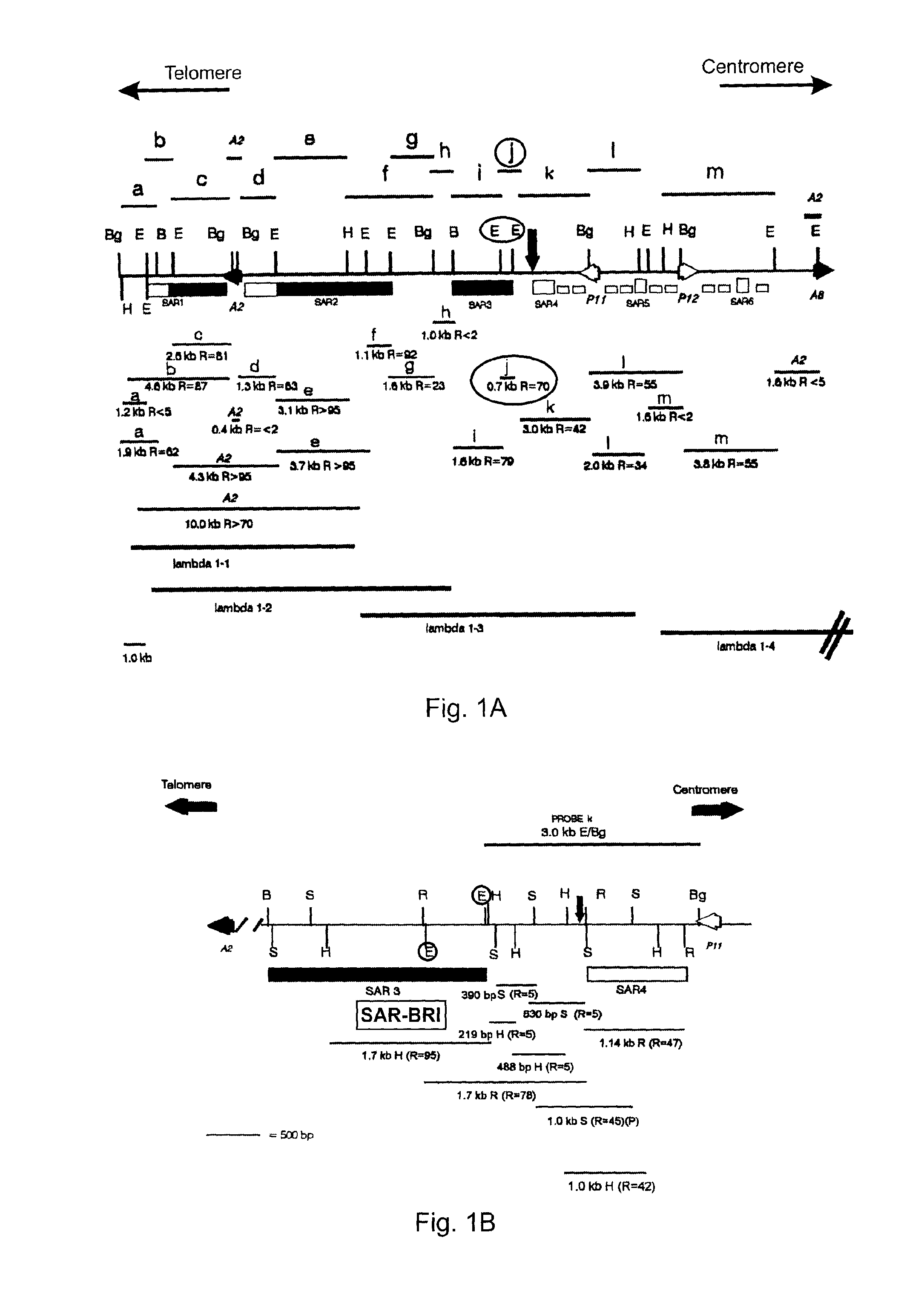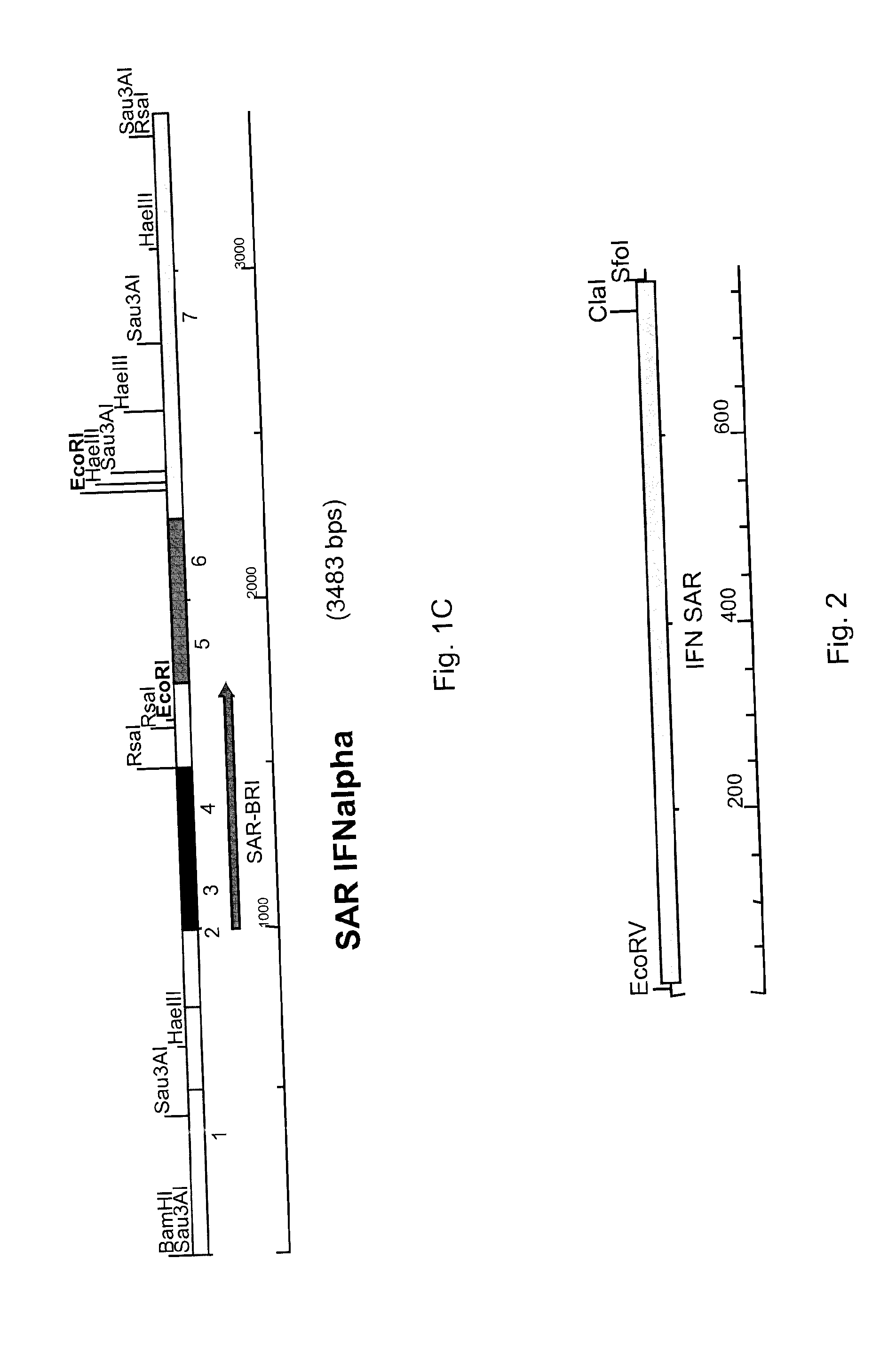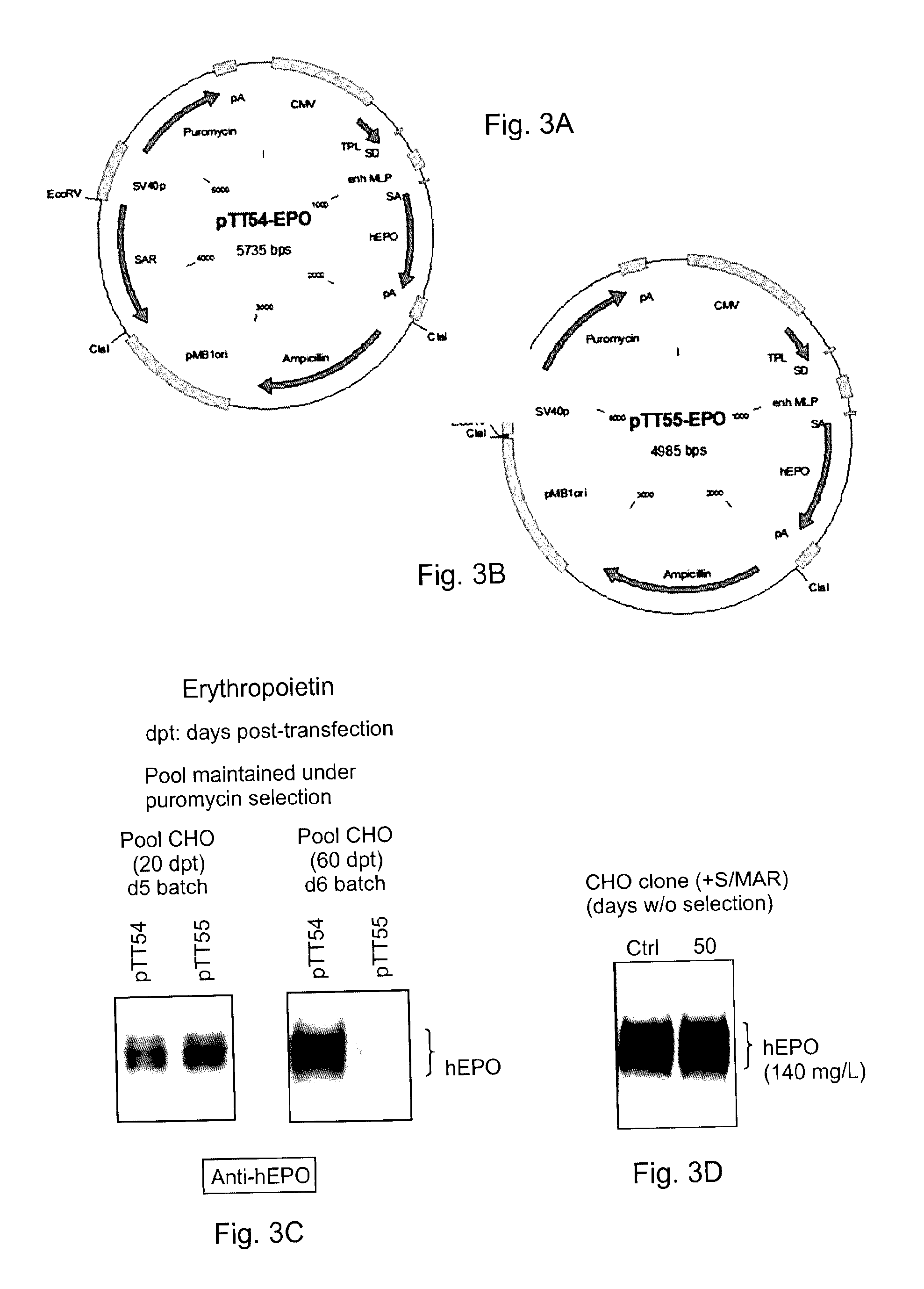Expression System With Sar Element From IFNalpha2
a technology of sar elements and expression systems, applied in the field of polynucleotides for enhancing protein expression, can solve problems such as inability to incorporate into expression vectors, and achieve the effect of reducing the burden of generating stable clones and improving expression stability
- Summary
- Abstract
- Description
- Claims
- Application Information
AI Technical Summary
Benefits of technology
Problems solved by technology
Method used
Image
Examples
example 1
Synthesis of SAR-BRI
[0038]An example of a SAR of the present invention (SAR-BRI) is set forth in SEQ ID NO: 1, which is a 751 nucleotide sequence corresponding to by numbers 1000-1750 of the human interferon α2 upstream scaffold associated region 3 (SAR3) sequence (gi|1791229|gb|U82705.1|HSU82705). SEQ ID NO: 1, which is 73.4% AT-rich (38.9% A, 34.5% T, 12.2% C, 14.4% G), was identified as a potential expression insulator and Geneart was contracted to synthesize it using generally known methods. The sequence possesses two base mutations that were generated to destroy endogeneous EcoRl and EcoRV restriction sites (C1639→G and G1695→T, respectively). The sequence was also flanked by EcoRV and Sfol restriction sites on the 5′ and 3′ ends, respectively, for cloning purposes, as shown in FIG. 2.
[0039]Previously, a 0.7 kb “strong” SAR element from the SAR3 region of IFN-α2 was identified (Strissel 1998). As shown in FIG. 1A, this 0.7 kb SAR (j, R=70) is located between two EcoRl sites (ci...
example 2
Erythropoietin (EPO) Expression Plasmids
[0042]The SAR-BRI sequence synthesized in Example 1 was inserted in a pTT55-EPO vector (FIG. 3B) at the EcoRV restriction site lying between the puromycin resistance cassette and the prokaryotic origin of replication (pMB1) to yield pTT54-EPO plasmid (FIG. 3B). The pTT55-EPO plasmid encodes a codon-optimized human erythropoietin cDNA (Geneart) under the control of the CMV5 promoter (Durocher 2002; Massie 1998).
[0043]The pTT55-EPO and pTT54-EPO plasmids were transfected into Chinese Hamster Ovary (CHO) cells and the cells were cultured under puromycin selection to form stable CHO-DG44 EPO pools. To generate the CHO-DG44 pools expressing EPO, cells grown in CHO CD-DG44 medium (Invitrogen) were transfected with PEImax (Polysciences) using 1 μg / ml of supercoiled plasmid DNA at a DNA:PEI ratio of 1:5 (w:w). Puromycin was then added 24 hours post-transfection (hpt) at a concentration of 10 μg / ml. The culture medium was regularly replaced with fresh ...
example 3
Herceptin™ Expression Plasmids
[0049]Herceptin™ is a trade name for the monoclonal antibody trastuzumab. Codon-optimized Herceptin™ heavy chain cDNA (Geneart) was cloned into pTT54 or pTT55 vectors to yield pTT54-TZMHc plasmid (FIG. 4A) and pTT55-TZMHc plasmid (FIG. 4B). The Herceptin™ light chain was cloned into pTT52 vector to yield pTT52-TZMLc plasmid (FIG. 4C). The pTT52 vector is the same as the pTT55 vector except that the puromycin resistance gene was replaced by a glutamine synthase gene (hGS). The pTT54-TZMHc plasmid contains the SAR-BRI sequence while pTT55-TZMHc and pTT52-TZMLc do not.
[0050]To generate stable CHO-DG44 pools expressing Herceptin™, cells were transfected as described for EPO in Example 2 except that two vectors were co-transfected at a 1:1 (w:w) ratio (pTT54-TZMHc+pTT52-TZMLc or pTT55-TZMHc+pTT52-TZMLc). Selection was done as for EPO. Expression of Herceptin™ by the resulting pools was compared 6 days or 25 days post-transfection by western blot under reduci...
PUM
| Property | Measurement | Unit |
|---|---|---|
| concentration | aaaaa | aaaaa |
| stability | aaaaa | aaaaa |
| expression stability | aaaaa | aaaaa |
Abstract
Description
Claims
Application Information
 Login to View More
Login to View More - R&D
- Intellectual Property
- Life Sciences
- Materials
- Tech Scout
- Unparalleled Data Quality
- Higher Quality Content
- 60% Fewer Hallucinations
Browse by: Latest US Patents, China's latest patents, Technical Efficacy Thesaurus, Application Domain, Technology Topic, Popular Technical Reports.
© 2025 PatSnap. All rights reserved.Legal|Privacy policy|Modern Slavery Act Transparency Statement|Sitemap|About US| Contact US: help@patsnap.com



